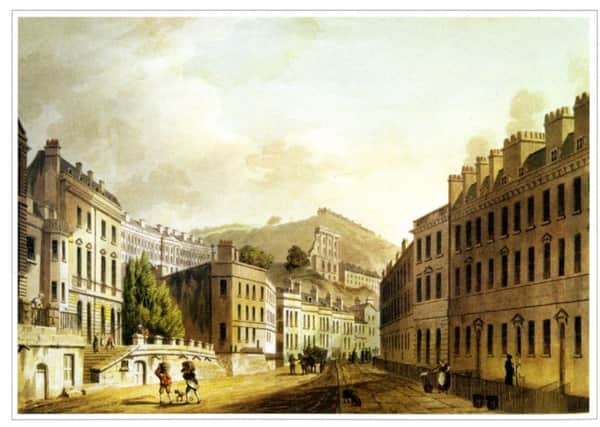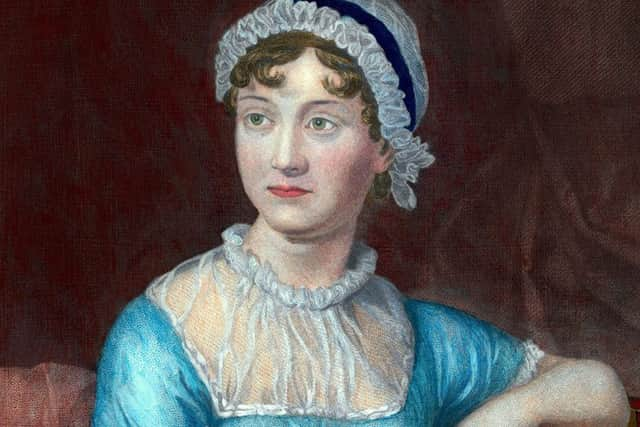Nostalgia: A time of chronic disorder


Sense and Sensibility, published in 1811, and Pride and Prejudice, first begun in 1796, but not printed until 1813, were both written during the years of Britain’s prolonged wars with France, when Nelson won his naval victories and Wellington had begun to drive Napoleon’s army out of Spain. Mansfield Park (1814) coincided with Napoleon’s first abdication and exile to Elba and Emma (1815) appeared soon after the final decisive battle of Waterloo.
Yet all these huge, historical events, which affected and determined the future of not just Britain but the entire world, passed virtually unnoticed in Jane’s writing. They were no more than a distant and almost irrelevant backdrop to matters which really absorbed her – the manners, morals and marriages of the English country gentry of her time and place.
Advertisement
Hide AdAdvertisement
Hide AdJane Austen lived most of her life in rural Hampshire, only a day’s journey inland from the ports of Southampton and Portsmouth. For three years she actually had a home in Southampton and two of her brothers, Francis and Charles, joined the Royal Navy at the age of 12 and were stationed for a time at Portsmouth. However, serving soldiers and sailors are conspicuous absentees from her novels, even though they must have been seen by her almost every day. Winchester, where she died and is buried, had a census population of 8,000 in 1801, a quarter of them garrison soldiers.


In the event, Jane knew only the south of England and mostly only the gentry who lived there. Her most northerly venture was to Chatsworth house in Derbyshire which impressed her so much that she made it the model for Pemberley, Darcy’s mansion in Pride and Prejudice.
When it comes to the national picture, her readers might be forgiven for assuming that Miss Austen lived through an age of peace, order and quiet continuity, when her country was at war during 26 of her 41 years, with the Americans (twice), Spain, Holland and with France almost continually. Perhaps her concern might have been different if her own family had been directly involved and affected by these wars, but her brother Francis, to his disappointment, was at Malta and missed the battle of Trafalgar.
Indeed, there is little hint that Jane lived through a time of enormous change, upheaval, suffering and achievement. Of her great literary contemporaries, Coleridge, Byron, Shelley and Keats, she admired only Sir Walter Scott, though envied the success of his historical novels. She was born in the same year as Turner and a year before Constable. James Watt developed the first rotary steam engine when she was seven; before she died George Stephenson was running locomotives on rails. Her time was one of stupendous feats of engineering, road construction, canal navigation and bridge building. She can be excused for not being aware of the greatness of Sir George Cayley.
Advertisement
Hide AdAdvertisement
Hide AdJane’s was also an era of significant progress out of barbarism and cruelty. The last hanging, drawing and quartering took place in 1782; in 1789, the last woman to be burnt alive; in 1801, the last public execution by beheading with an axe; and in 1807 Parliament passed an Act to end the British slave trade. The introduction of transportation to Australia in 1787 was actually a more humane punishment than imprisonment in diseased prisons or rotting river hulks.


On the other hand, by our standards Britain was then a place of chronic disorder and crime. It was an age of bloody riot, naval mutiny, widespread smuggling, highway robbery, coin counterfeiting, house burglary and street mugging. There were 220 capital offences on the statute book and decaying corpses swinging from gibbets was a common sight and smell.
When recently English Heritage held a poll of its members, the Prince Regent, later George IV (1810-30), was considered the worst ruler the kingdom had ever experienced. Yet much more relevant to the lives and livelihoods of most of his subjects was not George’s extravagance, idleness and immorality or even their defeat of Napoleon, but the gigantic economic and social changes which historians have come to call the industrial revolution. That revolution took more than a century to evolve, but it was during the lifetime of Jane Austen (1775-1817) and the “rule” of George as Regent and then King that its pace and power quickened.
That revolution driven by water and steam and turning cottage industries into factory production was not only urban: Jane Austen’s own rural society was being rapidly and fundamentally altered by major improvements in agriculture. Land enclosure made possible scientific animal breeding and arable fertilisation. The extensive medieval open fields of arable and the common pastures were fast disappearing. Between 1800 and 1820 almost a thousand Acts of Parliament transformed even more of the appearance and production of farming. Locally, the swamps and carrlands of the Vale of Pickering were turned into fields of cereals.
Advertisement
Hide AdAdvertisement
Hide AdMiss Austen was familiar at first hand with the society of those who journeyed to Bath for the fashionable company and the health cure since she was there as a resident with her family between 1801 and 1805. During their time at Bath the Austens made several visits to Lyme Regis on the Dorset coast, but again these two places provided Jane with no more than scenic background to her fictional tales of romance, rank, money and marriage in Persuasion. So even if she had been a Yorkshire lady who had visited the spa at Harrogate and the seaside resort of Scarborough, rather than Bath and Lyme Regis, probably we would be disappointed with her descriptions of both.